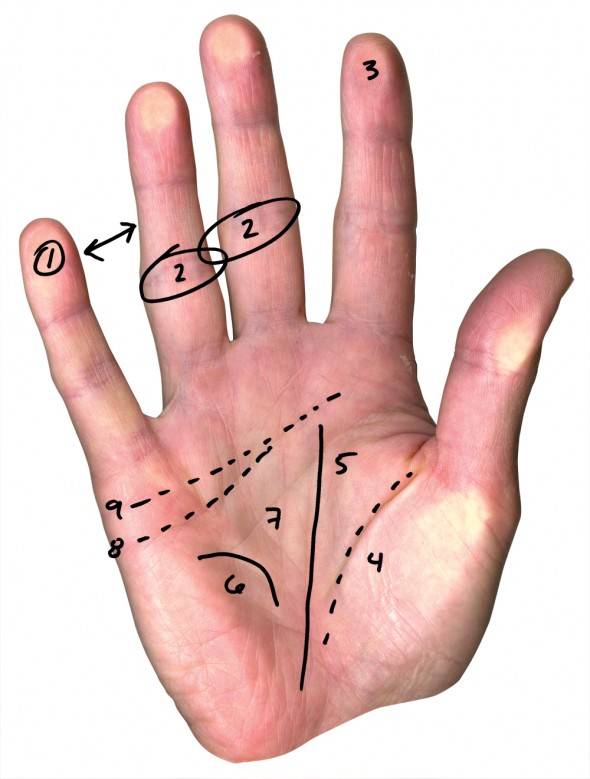
One of the creative forces behind Apple’s innovative campaigns reveals why it’s about thinking different
He may not be a household name, but consumers know Eric Grunbaum well. As Co-Executive Creative Director at TBWA/MEDIA ARTS LAB, he’s been helping craft Apple’s radically simple approach to advertising since “Think Different.” In that time, he’s produced, along with a powerhouse creative team, a series of iconic, pared down campaigns that capture the brand’s zeitgeist, while respecting the nuances of an increasingly elusive “demographic.” SOMA catches up with Grunbaum to discuss his ethic of simplicity, the changing role of technology, and, of course, to weigh in on that time old dilemma: have you been naughty or nice?
Clearly, simplicity is the cornerstone of your approach. I think of the various campaigns as pared-down, direct, graphic, nonchalant, streamlined. In a way, these are long-standing aspects of traditional advertising that you’ve inverted and somehow made new. How did you cultivate this?
First off, I’d say that simplicity is the cornerstone of our approach. I work alongside a bunch of extremely talented people at MAL, including my creative partner Duncan Milner and our president James Vincent—and our creativity is in the service of an exceptional brand, so you can’t take credit for something that’s truly a collaborative effort. But yes, I’m very aware that our campaigns appear simpler and more direct than the average advertising campaign. I’ll readily admit that my approach has been directly influenced by Apple over the years I’ve worked with them. This is a company that, among other things, takes very complex technology and distills it into beautiful useable forms that human beings can relate to. There’s a level of integrity, honesty and approachability to this philosophy that I hope to achieve in my work, if for no other reason than because it’s staying truest to the qualities of the products we’re advertising.
Do you practice an “ethic of simplicity”?
Actually, we have a mantra at MAL of “simple, human, and intuitive,” and again, this philosophy is derived directly from the products we’re asked to advertise. We endeavor to get to the essence of the product, and resist the temptation to show off our creativity or let gratuitous marketing theatrics and advertising conceits get in the way of the message itself. In fact it takes a lot of effort to make something look effortless. Jony Ive, Apple’s design chief, once said that his goal is to create a design that feels “inevitable”—where the hand of the designer is invisible and the product feels like it couldn’t be anything else than what it is. Similarly, if the art director of an ad is invisible, we consider it a success.
Across various media, your work reflects a keen understanding of the consumer, both in terms of defined demographics (twenties, thirties) but also their inconsistencies. Is it getting harder to pin down a “target audience”?
As important as understanding the brand itself, is understanding the brand’s audience. To that end, we practice a discipline at MAL called “audience planning”, led by a really smart woman named Elena Hale. Basically, it seeks a deeper understanding of people than just “Male, 18-34”, and it doesn’t automatically assume that human beings are “consumers” just waiting to buy our stuff. Instead, we need to respect that people are spectators of brands before they choose to consume one. We’d rather figure out how people spend their time, what they find important, and how they digest media—instead of just looking at them in a vacuum of our brand alone. If we respect the audience, they will hopefully reward us with their attention.
Smart design also seems to play a vital role. Does it make your job easier?
I’d be lying if I said I’d rather help a dumb company market below-average, unattractive, irrelevant products than help a smart company market ingenious, beautiful highly-useful products. But working for a company of perfectionists isn’t something I’d characterize as “easy” either.
Is there such a thing as a product that sells itself?
You wouldn’t be referring to the iPhone by any chance, would you? Well, yes, obviously, some products will have much more innate demand than other products. With the iPhone, it was our job to get out of the way and share the product in a simple, honest way that helped people understand what it does and how it might make a difference in their lives.
Will the iPhone change the world?
It won’t end the war in Iraq, reverse global warming, or rid us of disease. But in the world of technology, and the way humans relate with technology, it already has changed quite a few things. It’s certainly changed my world.
This year, have you been naughty or nice?
That depends on who you ask. But since you asked me, the answer is “very nice”, of course!
– Franklin Melendez

Reading by Lena, who has no idea this palm belongs to Eric Grunbaum.
1. Independence of thought.
2. He approaches situations with a mindfulness of their potential outcomes and effects.
3. Great detail orientation.
4. Has a somewhat delicate physical constitution and will need to remember not to leave himself out in the rain—this guy will rust.
5. He will perform great deeds, in spite of worrying all the way through them.
6. Later in his life, he will become a great traveler and see the fruition of many of his dreams.
7. Great aesthetic appreciation here. Will love old, beautiful or handmade objects and appreciate their unique qualities. Will tend to collect such things or otherwise surround himself with them.
8. Extremely intelligent, but probably sleeps poorly because he thinks all day and all night too—it just won’t turn off! Will have quite remarkable dreams when he does finally sleep!
9. Wildly creative, full of ideas.

